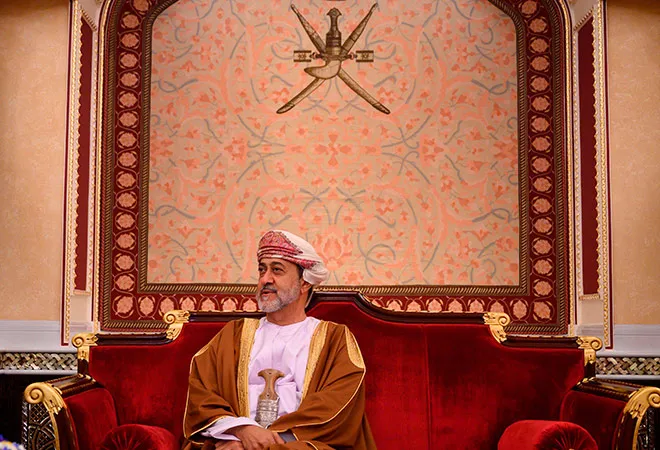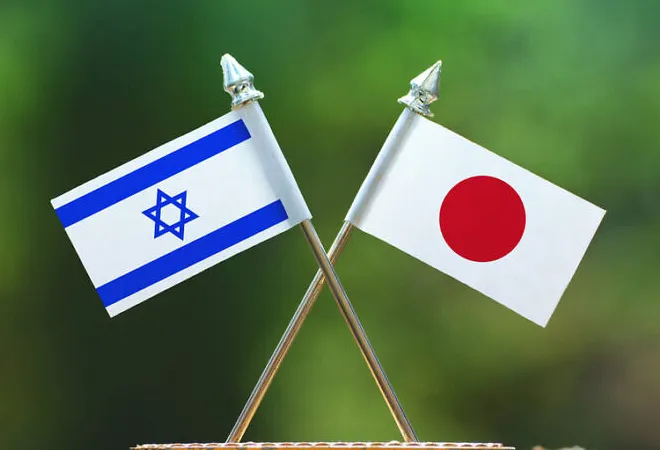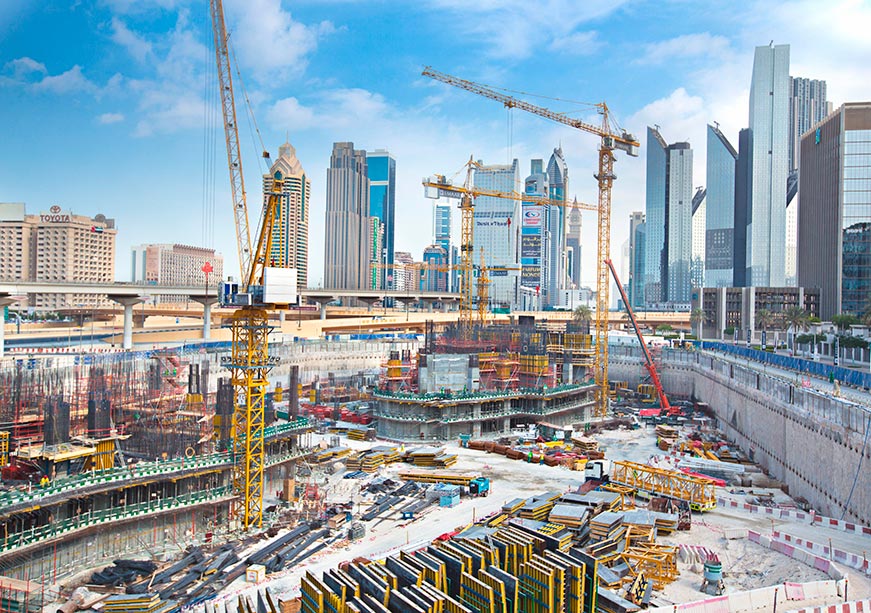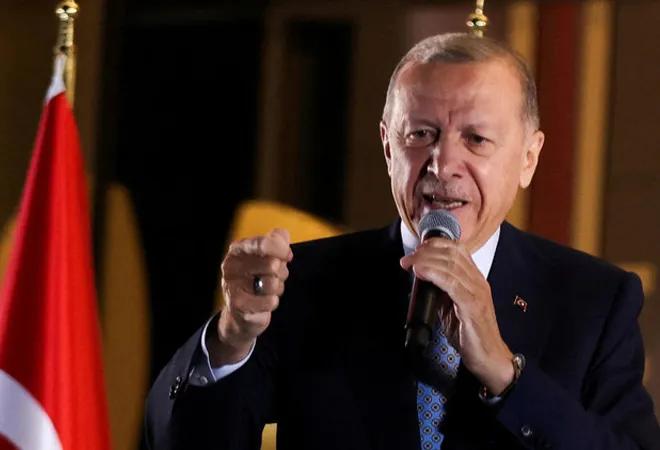Less than a year ago, Sultan Haitham bin Tarik took charge of Oman with much hope on January 11, after the passing away of the kingdom’s longest-serving ruler Sultan Qaboos bin Said. It soon gave way to the tough task at hand, with the country registering COVID-19 cases from February this year. Lockdowns in the capital city of Muscat and other parts of the country in the later months have led to reduced business activity and even job losses. Apart from the economic challenges, Sultan Haitham also has to deal with the changing political landscape in the Middle East.
A tough year
Just as Sultan Haitham was settling down in his new job, COVID-19 struck Oman in February. Omani pilgrims returning from Iran tested positive coinciding with the spread of the pandemic to different parts of the world.
To control the spread of the disease, Oman enforced lockdowns in a staggered manner resulting in businesses taking a big hit. In January, Oman had passed its budget based on oil at USD 58 per barrel, whereas the price since then has hovered around the USD 40 per barrel mark due to low international demand.
The double blow—less revenues from oil exports and corporate tax—has forced Oman to raise money from international markets to cover the deficit. In a statement released to the official Oman News Agency (ONA) in October, the Ministry of Finance said that it had issued two tranches of international bonds for maturity periods of seven years and twelve years amounting to USD 2 billion in total.
The home challenge
In his first national speech, Sultan Haitham laid down the outline of the country’s growth path, with the primary focus being the youth. He highlighted the importance of the small and medium enterprises in the country’s progress with special emphasis on startups based on innovation, artificial intelligence and advanced technologies.
In August, Sultan Haitham revamped the Council of Ministers, which saw the appointment of new ministers and merger of several ministries. Ministries like Tourism and Heritage, Manpower and Civil Service (now Labour), and Justice and Legal were merged while some new ones have come up like Housing and Urban Planning, Higher Education, Research & Innovation, Transport, Communications & IT, Commerce, Industry & Investment Promotion.
The crucial foreign ministry saw long-serving Yousuf bin Alawi bin Abdullah making way for Sayyid Badr bin Hamad bin Hamoud al Busaidi as the new foreign minister of Oman. The changes Sultan Haitham has brought about in the government structure are geared towards meeting the aspirations of the people and to give a new direction to the country’s progress.
Under its new ruler, Oman has embarked to meet the objectives of “Vision 2040”, which will be implemented from 2021. The strategic approaches of this vision have been defined in accordance with priority goals, on top of which come a high-quality education system and an effective scheme of research and innovation to build a knowledge-based economy.
Under its new ruler, Oman has embarked to meet the objectives of “Vision 2040”, which will be implemented from 2021. The strategic approaches of this vision have been defined in accordance with priority goals, on top of which come a high-quality education system and an effective scheme of research and innovation to build a knowledge-based economy.
“Empowerment of nationals with expertise and dynamic skills to meet challenges at the local and international levels, the achievement of sustainable healthcare and an administration that supports economic diversification are some of the key objectives of this vision,” the official state Oman News Agency reported. The agency reported that focus is on creating an enabling environment so that “the private sector could take the lead in shaping up the national economy.”’
Oman and the Middle East
For decades, Oman maintained ‘strategic neutrality’ in the volatile Middle East region, particularly in the Late Sultan Qaboos era. Oman has often been referred to as an ‘Oasis of peace’ in a region wrecked by conflicts.
The country played a key role in the Iran-US nuclear accord, hosting secret meetings and paving the way for the deal to be signed in 2015. In 2017, Oman refused to take sides when Saudi Arabia, the UAE and Bahrain took the lead in cutting trade and diplomatic ties with Qatar over ‘political differences’.
Another instance of Oman’s role as a neutral player in the region came to the fore in October 2018, after the visit of Israeli Prime Minister Benjamin Netanyahu. The Israeli PM made a rare visit to Oman and met the then ruler Sultan Qaboos. Soon reports started doing the rounds that Oman is mediating to settle the dispute between Israel and Palestine.
Muscat has maintained equidistance and has been friends with almost all the key powers in the region. However, this policy has come under strain as Israel breached the ‘pariah firewall’ to establish diplomatic ties with the UAE and Bahrain in the last few months. Before the UAE and Bahrain, Jordan and Egypt were the only two Arab countries to have established diplomatic ties with Israel.
Muscat has maintained equidistance and has been friends with almost all the key powers in the region. However, this policy has come under strain as Israel breached the ‘pariah firewall’ to establish diplomatic ties with the UAE and Bahrain in the last few month
In November, international media outlets reported that Israeli PM Benjamin Netanyahu held secret talks with Crown Prince Mohammed bin Salman in the presence of US Secretary of State Mike Pompeo in the city of Neom in Saudi Arabia.
Oman is on a wait-and-watch mode as countries in the region make their moves vis-à-vis Israel and recalibrate their stand over the Palestine issue. As more countries adjust their ties with Israel, it will be interesting to note how Oman maintains a neutral stand in the shifting sands of Middle East politics as the country has good ties with all the major players in the region.
Why Oman matters to India
India’s ties with Oman date back to almost 5,000 years ago. Modern diplomatic ties were established in 1955 and the relationship was upgraded to a strategic partnership in 2008.
The bilateral ties got a big boost after Indian Prime Minister Narendra Modi visited Oman in February 2018 and met the then ruler Sultan Qaboos. Both the countries signed pacts in areas like health, peaceful uses of outer space, tourism and military cooperation.
India is among Oman’s top trading partners. For Oman, India was the third largest (after th UAE and China) source for its imports and the third largest market (after the UAE and Saudi Arabia) for its non-oil exports in 2018. During 2019-20, bilateral trade was valued at USD 5.93 billion. There are over 4,100 Indian enterprises and establishments in Oman with an estimated investment of USD 7.5 billion. Oman is also an important source of remittance as nearly 500,000 Indians are employed in various sectors of the Omani economy.
Conclusion
The biggest challenge in the last 10 months of Sultan Haitham’s rule has been controlling the COVID-19 pandemic, which saw an average of 2,000 cases a day at its peak in July in a country of 4.5 million. Since February, Oman has registered 122,081 cases, with recoveries at 113,260 and 1,380 deaths till November 22.
A slowing economy and COVID-19 have forced the exit of over 277,000 foreign workers including 100,000 Indians in the first ten months of the year. Many businesses are struggling, employees have faced salary cuts and some businesses have shut down as well.
The non-oil sector, particularly tourism, is reeling under the impact of the pandemic. In 2019, Oman recorded 3.5 million tourist arrivals, providing a key source of non-oil revenue and jobs to locals at various levels.
In the coming days, the challenge for Sultan Haitham is to vaccinate the country’s population, navigate the economy through uncharted waters and provide jobs to thousands of Omani youths who are graduating from colleges and universities every year.












